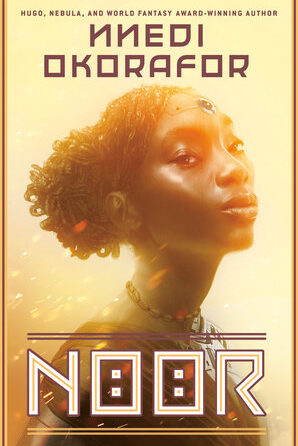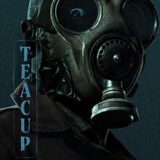Over the next two weeks I will be reviewing two anthologies of short stories, Noir and La Femme, both edited by Ian Whates and published by NewCon Press. Both books were launched at EasterCon 65 in Glasgow on 18 April. This week I will be reviewing Noir. Next week its twin volume, La Femme. I could just as easily have reviewed them the other way around.
According to the editor’s introduction to Noir, ‘This all started out as a single simple project, but, as so often happens, the concept evolved. The initial idea was to publish a collection of stories, each featuring a femme fatale, but on reflection that seemed too restrictive…’ The end result ‘was two books, thematically linked but each with their own identity.’ Such that Noir features ‘thirteen stories that dance around genre boundaries but are linked by a sense of foreboding, a prickly itch that will unsettle and leave you with the impression of something sinister lurking just beyond the reach of awareness…’ Meanwhile La Femme developed from stories about femme fatales into, ‘a book about women who are more or less than they seem’.

The stories in Noir are both diverse and eerily similar. Akin in that they all, as Whates says, capture a sense of foreboding. The collection opens with ‘The Crepuscular Hunter’ by EJ Swift. This is a near future science fiction story which sees perhaps 10-20 years advance on our own world in a society which has fused the physical and the digital ever more closely. The narrator handles digital PR for the rich and famous. Image rules, but in the post-modern world of digital fame, where masks are everything and meaning nothing, the titular hunter provides vicarious thrills, virtually dismembering the online incarnations of seemingly random victims. The female narrator is bored, faintly disgusted with her profession. Decides to set a trap… Swift’s story is a fine opener, an intriguing quest for reality in a future in flight from the real, a tale about identity, forgetting and the inescapable importance of purpose.
‘The Crepuscular Hunter’ sets a tone, if not the content, for many of the stories which follow are told in the first person, by narrators who are not what the reader imagines, or not what they imagine themselves to be, or both. In ‘Gross Thousand’ a woman visits a man to conduct an interview, which turns out to be an assessment. The man claims he knows, just by looking at someone, whether they will go to heaven or hell when they die. The woman’s purpose is to determine the man’s mental health. Adam Roberts has crafted a provocatively chilling story of theological terror, the sense of dread evoked being conceptual, rather than based on any graphically realised horror.
‘The Grimoire’ by Donna Scott is a real-time first person narration by a bookshop owner, recounting what happened the last time someone can enquiring about one of the titular magical volumes. This is a more convention horror tale, an enjoyably twisted tale in the vein of Terry Dowling’s ‘The Bone Ship’.
Two more tales told by female narrators. Emma Coleman’s ‘The Treehouse’ is a very dark fantasy, though perhaps only in the sense that we all have our daydreams and fantasies, particularly in childhood. This is a painful tale of unbearable bereavement and loss wrapped in the surrealist imagery of fantasy and horror. I found it too uncomfortable to be ‘enjoyable’. Paula Wakefield’s ‘Red in Tooth and Claw’ finds a successful and commanding female author setting out biography and advice alike to a younger woman, spinning twists on a very familiar fairytale and a key genre icon. It’s tongue-in-cheek and just the right length at six pages.
Elise is the driver of Simon Kurt Unsworth’s ‘Private Ambulance’. The story appears to set itself up as a short, traditional shocker – Elise drives a recent suicide from a hospital in the city to a funeral home in the country one icy night, and hears strange noises coming from the rear compartment of her vehicle. Then it rapidly very strange indeed in the final page. I can’t say I was any the wiser, but the sheer oddness of the denouement lingers in the memory.
Oliver was a biter at school. As an adult his compulsion has developed into something infinitely worse. When he meets Magda, a woman who is certainly more than she seems, everything changes in Jay Caselberg’s ‘Bite Marks’, a tense psycho-sexual nightmare.
Another predator is at the heart of Marie O’Regan’s ‘Inspiration Point’, but just what is going on when Marnie wakes to find herself prisoner in a dark basement? A complex psychopathic drama plays out in a story which is rather more intricate than the ‘torture porn’ set-up might lead one to expect.
In 20 pages ‘A Boarding House Heart’ by Paul Graham Raven offers an intriguing lead character, strong supporting characters who inhabits a world imagined in some considerable detail, and then tells an interesting, worthwhile story in fine prose. Merrill is the son of the thieftaker, works for the Provost, for the Mayoral Council in Portsee, a city off the mainland in a 17th or 18th century equivalent world. The thieftaker investigates a case with a very personal connection and comes to a turning point in his life. The city is beautifully evoked in rich prose. It is a setting ripe for development and I would happily read other stories set in this world, or even a novel.
Simon Morden’s ‘Entr’acte’ offers a different take on Noir and delivers a science fiction homage to the classic film genre, the detective protagonist (or rather, a glorified accountant) working on the moon in a time when it is home to a handful of international corporations. A woman comes to his office. Her husband has vanished without trace, which is not possible in a place where every drop of water, every breath of air, is tracked, monitored, weighed, measured and otherwise accounted for. Morden offers a clever genre homage and an equally crafty plot. Think of a certain SF film with Joseph Gordon-Levitt, then imagine a similar conceit extrapolated by a writer who values coherent plotting.
James Worrad gives us ‘Silent in Her Vastness’, a Ballardian tale of art, desolate architecture and the globally-culturally interconnected future. Except that Worrad fuses his wider concerns with a very warm, tender and painful examination of first love. The writing is magnificent. ‘Silent In Her Vastness’ is a brilliant, deeply moving story. The standout, if there is to be just one, of the collection. I found out afterwards that the evocation of Ballard is not accidental. On his blog Worrad quotes Ballard: ‘Architecture, communications, transport, merchandising… these are changing the interior design of our sexual fantasies.’ (JG Ballard, 1970)
‘Grief Striken’ by is a dark revenge thriller with no fantastical or supernatural elements. The protagonist is on a quest to find the doctor responsible for the death of his wife. What follows will not be pleasant. Paul Kane’s story may be remind you of a Christopher Nolan film. I forget which one.
The volume ends with ‘The (De)Composition of Evidence’ by Alex Dally McFarlane. The telling, using email and ‘documents’ from which text disappears over time, is more arresting than the content, which involves the investigation of a violent crime across the border of a newly independent Scotland.
*
 Ultimately it seems to me that a fair few, though not all, of the stories featured in Noir could have could have been in La Femme. Equally, as I will discuss next week, La Femme contains its share of stories which lean towards noir. I liked each collection equally, finding both to contain some really outstanding stories, and a couple which I didn’t care so much for; and perhaps striking that balance so that there is sufficient to satisfy most tastes in each book is the real art of deciding what went in which volume. Regardless, Noir is a very strong collection and highly recommended. Come back next Thursday for my review of La Femme.
Ultimately it seems to me that a fair few, though not all, of the stories featured in Noir could have could have been in La Femme. Equally, as I will discuss next week, La Femme contains its share of stories which lean towards noir. I liked each collection equally, finding both to contain some really outstanding stories, and a couple which I didn’t care so much for; and perhaps striking that balance so that there is sufficient to satisfy most tastes in each book is the real art of deciding what went in which volume. Regardless, Noir is a very strong collection and highly recommended. Come back next Thursday for my review of La Femme.
*
Last week I reviewed the new novel from NewCon Press, The Moon King by Neil Williamson.
I have previously reviewed single author collections from NewCon Press, including Microcosmos by Nina Allan (who has just won the 2013 British Science Fiction Association Award for Best Short Fiction for her novella, Spin) and Ian Whates’ own collection of short fiction, Growing Pains, published by PS Publishing.











3 Comments